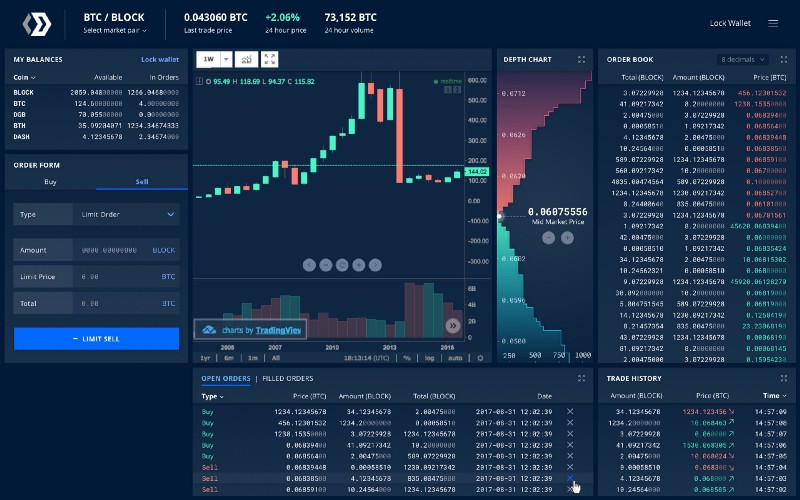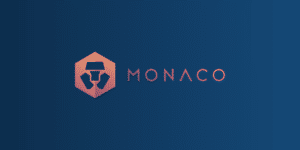Blocknet (sometimes referred to as Block) is a decentralized, platform-as-a-service protocol that connects the nodes of different blockchains. As you probably know, there are hundreds, if not thousands, of blockchains that currently exist, and this number is showing no signs of slowing down its growth anytime soon. Many of these chains, though, are unable to communicate and interact with each other, creating small groups of siloed ecosystems. And, the inability of these groups to work together is holding back the entire blockchain industry.
To solve this problem, Blocknet is working to make blockchains interoperable, mobile, and modular. This enables different chains to provide microservices to each other in a peer-to-peer fashion at higher security, faster speeds, and more efficient scalability than today’s current options.
In this Blocknet beginner’s guide, we’ll discuss:
- How does Blocknet work?
- Blocknet token (BLOCK)
- Blocknet team & progress
- Trading
- Where to buy BLOCK
- Where to store BLOCK
- Conclusion
- Additional Blocknet resources
How does Blocknet work?
Blocknet is aiming to be the “Internet of Blockchains” through inter-blockchain connective services. Simply put, Blocknet enables you to develop on one blockchain, Ethereum for example, but access the functionality of other chains, like NEO. The team is building the infrastructure using three core components that work together to provide three primary services for these inter-chain decentralized applications (DApps).
The Components
The XBridge, a blockchain router, is the backbone of the Blocknet platform. It’s the first peer-to-peer protocol to connect nodes on different blockchains, allowing them to communicate with one another. Using the XBridge, you’ll not only be able to perform cross-chain atomic swaps, but you’ll also be able to transfer additional data and execute smart contracts across chains.
To perform cross-chain swaps, Blocknet utilizes a coin exchange protocol. With this protocol, your exchanges between coins are instant and don’t require a third-party intermediary.
Blocknet’s inter-chain data transport is the final component of its interoperability. Taking chain communication one step further, the data transport powers smart contract execution and feature sharing capabilities across chains.
The Services
The first service on Blocknet’s roadmap is a decentralized exchange (DEX) with a beta release on March 1. The DEX has a few advantages over traditional, centralized exchanges:
- Trading Pairs. Centralized exchanges usually have limited trading pairs, often only with Bitcoin or Ethereum. The Blocknet DEX offers trading from any supported coin to any other supported coin.
- Anonymity. You’re not required to enter any KYC or personal information.
- Control. You have complete control of your funds. Your coins remain in a wallet out-of-reach of a central entity who can freeze your account.
- Security. Your trades occur entirely on-chain, so there’s little to no risk of a hacker stealing your money.
Blocknet’s inter-blockchain service delivery uses the XBridge to connect the service offerings of different blockchains. This means that you can build DApps combining your favorite features from separate projects, all on one chain.
With that, Blocknet also includes service monetization functions in which nodes from one blockchain can charge the other nodes on the network for using their services. A whole new group of previously unavailable customers now becomes accessible to blockchain projects. Even better, the nodes using the service pay in their native coin, and because of the coin exchange protocol, the service provider receives payment in, you guessed it, their own native coin.
Blocknet Token (BLOCK)
To cover the Blocknet token (BLOCK), it’s important we explain the governance mechanism of the platform.
Proof-of-Stake
Blocknet uses a Proof-of-Stake consensus algorithm with three types of nodes to maintain the network.
Service nodes collect and distribute trade fees on the platform as well as prevent spamming and DDoS attacks. To run a service node, you need to hold at least 5,000 BLOCK and keep your node computer running at all times. The Blocknet team recommends that, if you plan to run a service node, you should also run multiple full node wallets of whichever coins you want to support. This maximizes the trading fees you receive.
When running a service node, you’ll receive ~18% annual returns from block rewards plus your share of trading fees.
Staking nodes confirm network transactions. When running a staking node, you’ll receive 9-14% annual returns from block rewards as well as a portion of the trading fees. There’s no minimum BLOCK amount you need to keep in your wallet to receive these, but you need to keep the wallet running at all times.
You need to run a trading node to use the DEX. This only requires that you sync the wallet of each currency you’d like to trade.
[thrive_leads id=’5219′]
Superblocks
A superblock occurs every 43,200 blocks. At this time, nodes enter proposals and service nodes vote on which proposals get a portion of newly generated funds. There’s a maximum of 4,320 BLOCK tokens that are generated with each superblock. With this decentralized governance model, Blocknet has no need for an ICO and doesn’t take additional trade fees.
The only trade fees you pay are the network fees associated with the coins you’re trading and a small fee that the nodes receive. The node fee is taken in BLOCK, although if you don’t have any BLOCK, the network will automatically convert your original token to BLOCK to pay the nodes. There’s currently a little over 5 million BLOCK in circulation.
Blocknet team & progress
There’s limited information available on the Blocknet team. Dan Metcalf and Arlyn Culwick founded Blocknet in 2014 as a fork of PIVX. According to his LinkedIn page, Metcalf was a Bitcoin developer for 5 years as well as a Senior DevOps Engineer at Philips. Outside of Blocknet, Culwick is also the PR and Media Liaison for XCurrency.
Blocknet launched the service nodes on their main net in September 2017, and on March 1st, 2018, the team will release the beta version of the DEX. The project has also partnered with the 0x protocol to add ERC20 token support on the platform. Additionally, Blocknet is integrating with Ethfinex, Poloniex’s new decentralized exchange.
As a decentralized exchange, Blocknet has no shortage of competitors. The Komodo BarterDEX, BitShares, and Ether Delta all operate in the same space. The most similar project, though, is ARK. ARK’s Smart Bridges are similar to Blocknet’s XBridge in that they connect distinct blockchains and facilitate communication between them. However, ARK’s first focus is on easy blockchain deployment while Blocknet’s is on their DEX.
Trading
The Blocknet price laid dormant (excluding a small bump in September 2016) until April 2017. Starting in April, the price steadily rose before skyrocketing at the end of August to a local high of $32.28 (~0.00683 BTC). The price seemed to follow the old adage of “buy the rumor, sell the news” as the spike occurred in the days leading up to the launch of the production blockchain and fell shortly after.
Most recently, the price saw some positive movement with the release of the new DEX design and it rose with the rest of the market to an all-time high of $56.22 (~0.00332 BTC) at the beginning of January 2018. Since then, the price has fluctuated wildly, currently sitting around $36.
The DEX beta release on March 1st will most likely have some effect on the price. Whether this is positive or negative will depend on how the community feels about the product. The release of the whitepaper on March 15th and the updated wallet on June 15th should have a positive influence on the price.
Where to buy BLOCK
BLOCK is only available on three exchanges: Bittrex, Upbit, and CryptoBridge. You can exchange Bitcoin for BLOCK on all three. If you don’t own any Bitcoin, you can purchase some with USD on either Gemini or GDAX.
Where to store BLOCK
You should store your BLOCK on the official Blocknet wallet downloadable here. It’s available on Windows, Mac, and Linux systems. Make sure to keep your wallet open if you want to stake your coins and earn more BLOCK.
Conclusion
Blocknet is connecting the isolated blockchain systems that currently exist to create one, cohesive ecosystem. Through the platform’s XBridge, the team is building a blockchain Internet in which you can build DApps that utilize features from several different chains.
Starting with a DEX, the project has a lot on its roadmap including a service delivery system for blockchains to provide and receive payment for providing functionality to other chains. This is a complex project, but Blocknet already has the partnerships in place (0x, Poloniex) to see it through to the end.
Additional Blocknet resources
Never Miss Another Opportunity! Get hand selected news & info from our Crypto Experts so you can make educated, informed decisions that directly affect your crypto profits. Subscribe to CoinCentral free newsletter now.












